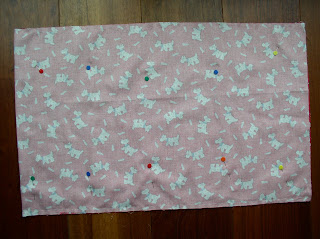
This was an inspirational moment. I just had to start and do it after seeing some pyramid bags with a zip on the internet. I was pondering how to put the zip easily when I remembered buying some lavender this summer in a shop in Cirencester.
And so I decided to make some lavender bags in the shape of a pyramid, with a bit of ribbon to attach them to a hanger or to put in a drawer.

They are really easy to make. The only rule is that you take a piece of material that is double the length than the height. For me they were 3 1/2" x 7". I used little bits left over from projects, sometimes had to sew them together.

You fold the fabric in 2, right sides together, and sew along 2 sides, after inserting a piece of ribbon in one of the corners, so that the 2 little ends stick out.
Then fold your fabric on the open side, so that your seam is in the middle of the length to sew. You can leave 1" or 2 cm open to turn the bag out and fill the little pouch with the lavender.
I took this photo on my first attempt, when I left the hole on one of the first seams, I changed after but they all work. The idea is to have a hole somewhere.

Then, of course, you turn it inside out, fill it with dried lavender, or whatever you want to use, and slipstitch the opening closed.

I was quite pleased to have done 7 in the afternoon, but then my girls came back from school and wanted 1 each, and that's 4 gone (but I am secretly happy that suddenly they like the smell of lavender). I am hoping to be able to make some more, as little presents ready to be given.
Enjoy this quick project.




















